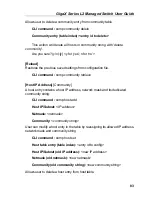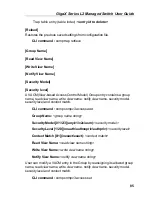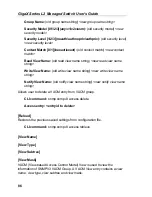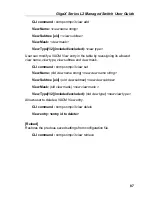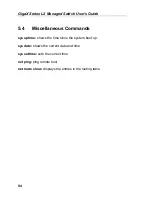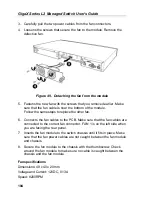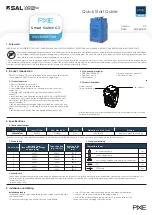
GigaX Series L2 Managed Switch User Guide
97
6.1.2 Network
classes
The three commonly used network classes are A, B, and C. (There is also a
class D but it has a special use beyond the scope of this discussion.) These
classes have different uses and characteristics.
Class A networks are the Internet's largest networks, each with room for over
16 million hosts. Up to 126 of these huge networks can exist, for a total of over
2 billion hosts. Because of their huge size, these networks are used for WANs
and by organizations at the infrastructure level of the Internet, e.g. your ISP.
Class B networks are smaller but still quite large, each being able to hold over
65,000 hosts. There can be up to 16,384 class B networks in existence. A
class B network might be appropriate for a large organization such as a
business or government agency.
Class C networks are the smallest, only able to hold 254 hosts at most, but the
total possible number of class C networks exceeds 2 million (2,097,152 to be
exact). LANs connected to the Internet are usually class C networks.
Some important notes regarding IP addresses:
The class can be determined easily from field1:
field1 = 1-126:
Class A
field1 = 128-191: Class B
field1 = 192-223: Class C
(field1 values not shown are reserved for special uses)
A host ID can have any value except all fields set to 0 or all fields set to 255, as
those values are reserved for special uses.
Summary of Contents for GigaX 2124X
Page 1: ...GigaX Series Layer 2 Managed Switch User Guide ...
Page 34: ...GigaX Series L2 Managed Switch User s Guide 34 Figure 15 Firmware Upgrade ...
Page 36: ...GigaX Series L2 Managed Switch User s Guide 36 Figure 16 Physical Interface ...
Page 45: ...GigaX Series L2 Managed Switch User Guide 45 Figure 23 Dynamic Address ...
Page 48: ...GigaX Series L2 Managed Switch User s Guide 48 Figure 25 Tagged VLAN ...
Page 57: ...GigaX Series L2 Managed Switch User Guide 57 Figure 33 USM User ...

